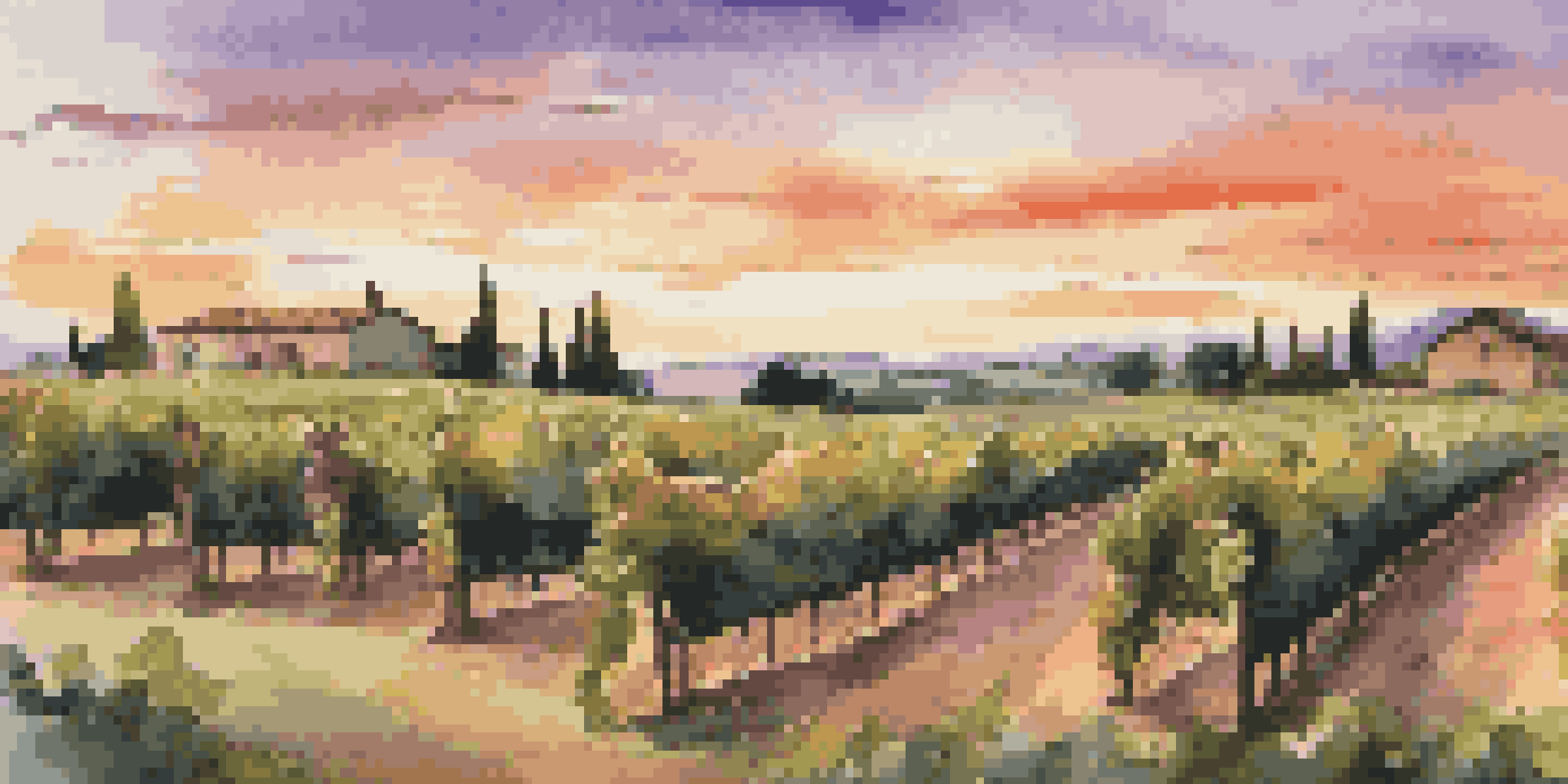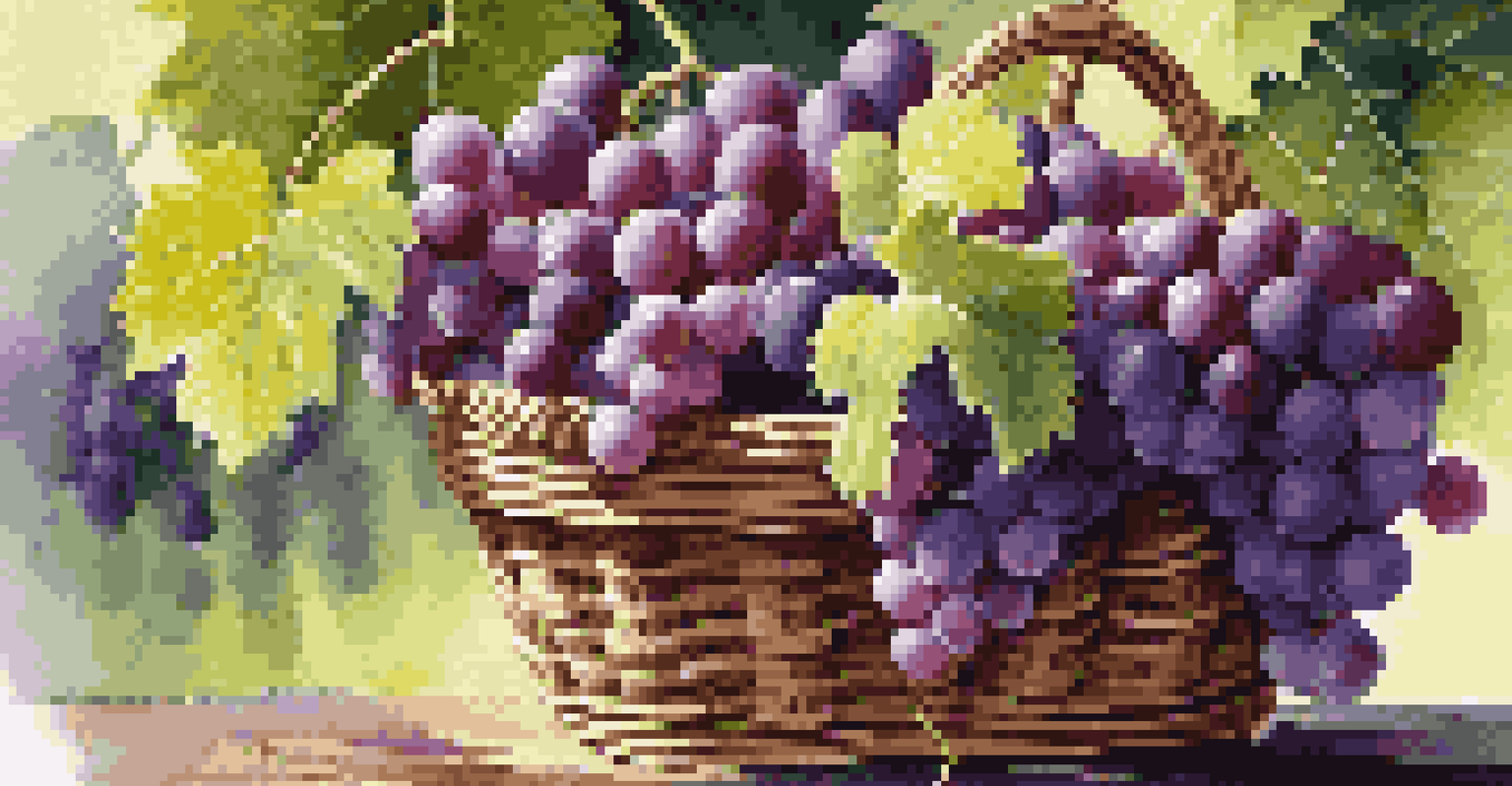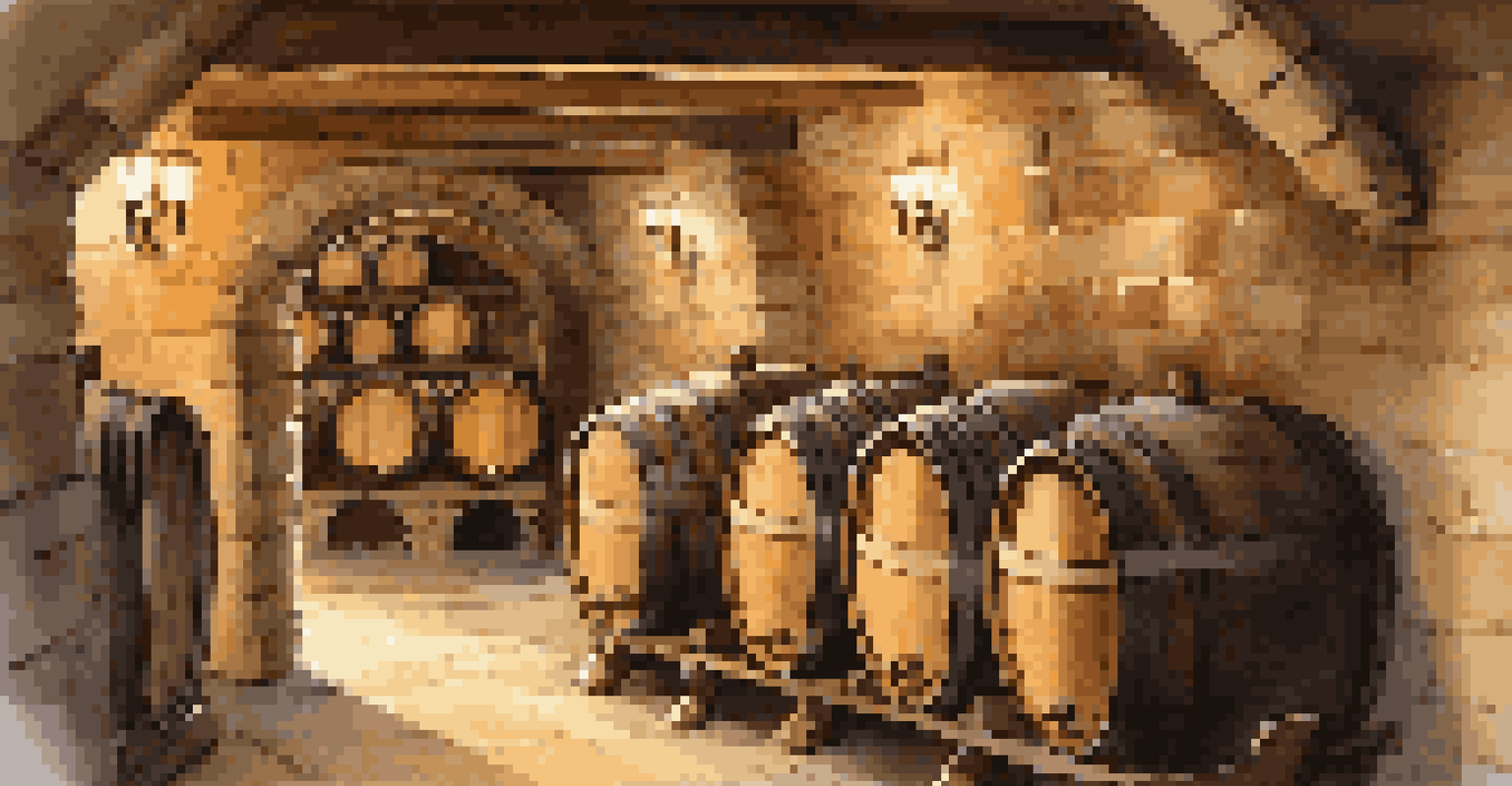Exploring the Craft of Winemaking: From Grape to Glass

Understanding the Basics of Winemaking
Winemaking, or vinification, is the process of producing wine from grapes. It involves several steps, including harvesting, fermenting, and aging. Each of these stages plays a crucial role in determining the final flavor and quality of the wine. Understanding these basics is the first step in appreciating the art behind each bottle.
Wine is sunlight, held together by water.
At its core, winemaking starts in the vineyard, where grape varieties are carefully selected based on climate and soil conditions. Different grapes yield different flavors, and this selection is both a science and an art form. For instance, Chardonnay and Cabernet Sauvignon each offer unique profiles that appeal to various palates, showcasing the diversity of winemaking.
Once the grapes are harvested, they undergo crushing and fermentation, where the magic truly begins. Yeast interacts with the sugars in the grapes, transforming them into alcohol and carbon dioxide. This fermentation process can take anywhere from a few days to several weeks, depending on the desired characteristics of the wine.
The Importance of Terroir in Winemaking
Terroir is a French term that refers to the unique environment in which grapes are grown. It encompasses factors like soil type, climate, and even the slope of the vineyard. These elements significantly impact the flavor and quality of the wine, making terroir a critical consideration for winemakers.

For example, a vineyard located in a cooler climate may produce grapes with higher acidity, leading to a crisper wine, while grapes grown in warmer regions often yield richer, fuller-bodied wines. This geographical influence is why wines from different regions can taste remarkably distinct, even when made from the same grape variety.
Winemaking: An Art and Science
The process of winemaking involves various crucial steps, from harvesting to aging, each contributing to the wine's final flavor and quality.
Understanding terroir allows winemakers to craft wines that reflect their specific environment, creating a sense of place in each bottle. This connection to the land is what makes exploring wines from various regions such a delightful experience for enthusiasts.
The Harvest: Picking the Perfect Grapes
The harvest is a pivotal moment in winemaking, as it determines the quality of the grapes that will be used. Timing is everything; grapes must be picked at their peak ripeness to ensure optimal flavor and sugar content. Winemakers often taste the grapes repeatedly in the weeks leading up to harvest to decide when to pick.
In wine, there is truth.
Traditionally, harvests were done by hand, allowing for careful selection of the best grapes. However, many vineyards now use mechanical harvesters to speed up the process, especially in larger operations. This shift can affect the quality of the grapes, as machines may not be as selective as human pickers.
Regardless of the method, the goal remains the same: to collect grapes that will produce high-quality wine. The excitement of harvest season is palpable, and it symbolizes the culmination of a year’s worth of hard work and dedication.
Crushing and Pressing: Extracting Flavor
After harvesting, the next step is crushing the grapes to release their juices. This process can be as simple as using a traditional wine press or as modern as utilizing pneumatic systems that ensure gentle extraction. The method chosen can influence the wine's final flavor profile and texture.
For white wines, the grapes are typically pressed immediately to separate the juice from the skins. In contrast, red wines are crushed and left with their skins during fermentation, allowing for deeper color and tannin extraction. This skin contact is crucial for developing the rich flavors and structure found in red wines.
Terroir Shapes Wine's Character
The unique environment in which grapes are grown, known as terroir, significantly influences the wine's flavor, making it essential for winemakers.
This stage is where the winemaker's artistry comes into play. Decisions about how to crush and press the grapes can significantly affect the wine's character, leading to a wide array of styles and tastes.
Fermentation: The Heart of Winemaking
Fermentation is often considered the heart of winemaking, where the transformation from grape juice to wine occurs. This process is initiated by adding yeast, which consumes the sugars in the juice, producing alcohol and carbon dioxide as byproducts. The duration and temperature of fermentation can greatly influence the final product.
There are two main types of fermentation: primary and secondary. Primary fermentation typically lasts one to three weeks, while secondary fermentation, or malolactic fermentation, softens the wine's acidity and adds complexity. This step is particularly common in red wines, enhancing their richness.
Winemakers closely monitor this process, making adjustments as needed to achieve the desired flavor profile. This careful balance of science and intuition is what brings each unique bottle of wine to life.
Aging: Developing Complexity and Flavor
Once fermentation is complete, the wine is often aged to develop its flavors and complexity. Aging can occur in various vessels, such as stainless steel tanks or oak barrels, each imparting different characteristics to the wine. For instance, oak barrels can add notes of vanilla and spice, enhancing the wine's overall profile.
The length of aging also plays a critical role; some wines benefit from years of maturation, while others are best consumed young. Winemakers must understand their wines and their potential for aging to determine the optimal time for bottling.
Harvest Timing is Critical
Selecting the perfect moment for grape harvest is vital, as it determines the quality and flavor profile of the resulting wine.
This aging process is akin to a fine cheese maturing over time, each moment adding depth and richness. It's fascinating how the choice of aging vessel and duration can create such a diverse array of flavors in each bottle.
Bottling: The Final Step in Winemaking
The final step in the winemaking process is bottling, where the wine is transferred into bottles for distribution and consumption. This stage requires careful handling to avoid introducing oxygen, which can spoil the wine. Many winemakers use specialized equipment to ensure a seamless transfer from barrel to bottle.
Before bottling, wines may be filtered and fined to remove any unwanted particles and achieve clarity. This process helps enhance the wine's overall appearance and stability, making it more appealing to consumers. It's a meticulous step that reflects the winemaker's attention to detail.

Once bottled, the wine may continue to evolve in the bottle, further enhancing its complexity. This final stage encapsulates the entire journey from grape to glass, ready to be enjoyed by wine lovers all over the world.